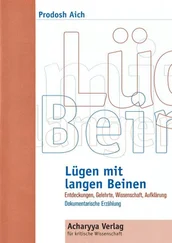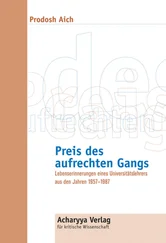So we looked at the bibliography. The first chapter “History of Religion, General Theology” has three sections. The oldest mentioned source for “Overall views” goes back to 1920, for “References” to 1956 and for “Sources” to 1908. The next chapter: "Brahmanism and Hinduism” has two sections for reasons we fail to understand. “References” and “Overall views” are put together. The oldest source referred to here is from 1891 and in “Sources” from 1912. A critical reviewof sources doesn’t occur. Was every printed word sacrosanct for Helmuth von Glasenapp? What would be the benefit of a critical review of sources?
Isn’t it rather depressing to note what is being sold as science? How does it look like in other “scientific” books? We have not yet been able to identify a different “science-culture”. Therefore, before we go into stories, we have decided to put a few simple questions: who is the narrator, how does he earn his living, who supports his story-telling, who is benefited by his stories and what were his sources. The result of this practice is even more depressing. But first things first. We haven’t been able to detect a single primary source in Helmuth von Glasenapp’s book. But he knew all about human races and their ranking. During the “Tausendjähriges Reich” under Hitler he did not suffer any setback to his career.
Knowing the modern-science-culture as manifested in the book by Helmuth von Glasenapp we are not amazed to note that sources have been referred to in the latest edition of the book, which were first published after 1963, that is after his death. Of course not real sources, but newly printed products. In “notes” we are informed that “ a number of other publications, mainly of recent dates, that could be suitable for further studies of the five great religions have been made available ”. We would have liked to know, which “spirit” has selected ‘ a number of other publications ’ and whether this “spirit” has also fumbled in the text . To make the book more sellable, of course!
In one of the “standard history books” in Germany, History of India: from Indus Culture to Today by Hermann Kulke and Dietmer Rothermund, 2nd expanded and revised edition, Beck, Munich 1998, first edition 1982, the same story reads on pages 44-45 as follows: “ The second millennium BC witnessed, after the fall of Indus Culture, another important event of the early history of India, when groups of central Asiatic nomads migrated through the Hindukush pass to Northwest India, who called themselves ‘Arya’ in their writings. In 1786 William Jones, the founder of the Asiatic Society in Calcutta, discovered close linguistic affinity between Sanskrit, the language of Aryas, and Greek, Latin, and the Germanic and Celtic languages. This epochal finding laid the foundation stone for exploration of the Indo-European family of languages, to which according to our contemporary knowledge more languages belong to than Jones had assumed in the beginning. Since the late 19th century more and more researchers came to the conviction, that the origin of this Indo-European family of languages was to be searched for in the spread of the East European and central Asiatic steppe (We include William Jones in our list for later scrutiny) .
The important findings of the early Linguists about the close linguistic affinity within the Indo-European family of languages were however overshadowed increasingly by racial-nationalistic ideologies, in which the origin of one’s own nation was postulated in a mystic-Aryan race. This applies particularly to German nationalistic historians since the 19th century and recently also to nationalistic historians of India. This development led to devastating results in Europe and also resulted recently in India to vehement quarrels between historians and to heavy communal riots. It appears therefore to be appropriate in the context of the early Indian history, to speak of ‘Aryas’ in the German language, to distinguish the mythical primary race of Indo-Europeans of Northwest India more clearly from the ideological construct ‘Arier’ of recent times. ”
This quotation is even more cynical than the one circulated in the Encyclopaedia Britannica, isn’t it? Are these “historians” not clandestinely trying to escape the moral responsibility for their so-called scientific doings? Even today they talk about ‘ the Indo-European family of languages ', but do not tell us which languages are not to be assigned to this family. They act as if all those problems created during the „Tausendjähriges Reich“ had been over for them since long. But do they really believe that it will work if they just spell the term “Aryans” differently? Should it now concern the Indian historians only? Can one be more hypocritical?
So, the immigrating “Aryans” bring the “Aryan” language “Protosanskrit” along with them to Northwest India. Then they refine their language to Sanskrit, devise the Sanskrit script and produce and deliver an abundance of great literature to the world. The “modern historians” specialised on this period and on this area are busy with their dating of events. What else could be more important than to determine precise dates when each and every writing was first published and to dispute on such issues “scientifically” with colleagues in the same field?
Since the emergence of Jainism and Buddhism about 2,600 years ago the history of India is well documented. During that period Sanskrit was no longer spoken. The literature on metaphysics, on science, on history, the books (Vedas, Upanishads, Puranas, Sutras) and the epics Ramayana and Mahabharata were, however, already known in the 7th century BC. So the “modern scientists” concluded precisely that this abundance of Sanskrit literature emerged before the 7th century BC only. So far, so good. The conquest and/or immigration is, however, dated around the 15th century BC. How was this dating determined? We add this question to our list of notes to be dealt with later. The ancient Sanskrit literature could accordingly by no means be older than the invasion and/or immigration of the “Aryans”, with Sanskrit as their language.
Rigveda is established as the oldest of the four Vedas because it doesn’t mention the other three Vedas. It is also supposed to be the oldest of all Sanskrit scripts composed around 1200 BC. We cannot see how “scientific” fixing of the dates of these books could particularly enlighten us. We won’t pass judgement on that. We only wonder why we are so totally unable to comprehend the stories told by the “modern historians” and indologists about the origin of Sanskrit literature. It would be unfair not to mention here that there is dissent about the dating acrobatics among these “scientists” as well as among different “scientific” disciplines.
It is agreed by all “modern scientists” that something like an “Aryan invasion” or an “Aryan immigration” must have taken place in India. How else would Sanskrit have found its way to India? A brilliant logic, no doubt. Where else should Sanskrit have come from? Do we find Sanskrit elsewhere? We do not know. No one can tell us. But one fact is striking indeed: the inventors of the theory of the “Aryan invasion” and/or of the “Aryan immigration” resemble the “Aryans” in their physiognomy. Is it only by coincidence? We won’t know. The diligent diggers, the archaeologists have yet to find evidence of an “Aryan conquest”, however. On the contrary. Their finding shocked the “Aryan-looking-scientists” for a while but could not shatter the whole theory. Because the archaeologists are principally unable to disprove the immigration of a language. Immigration of a language does not leave behind archaeological evidence, does it? No one can deny the presence of Sanskrit in India. Does it not brilliantly prove that the “Aryans” did at least immigrateinto India?
Читать дальше












